#Red Hat Application Development
Explore tagged Tumblr posts
Text
in other news i cannot stop fucking listening to Brokenheartsville by Joe Nichols and i’m starting to annoy myself with it but. i cannot stop. it’s too good
#Seven.txt#music stuff#it’s this perfect mix of being applicable to my current taste while also being a very nostalgic song for me#‘cause i liked it when i was a kid. and i recently heard it on my father’s radio outside. and man it’s been y e a r s since i’ve heard it#why is it so addictive to me#like. you cannot make a song that opens with the lyrics-#‘He wore that cowboy hat to cover up his horns. *insert seductive guitar sounds here* Sweet-talkin’ forked tongue had a temptin’ charm.’#and expect my southern and devil-loving ass to not go fucking feral over it#even when i’m not listening to it it’s playing in my head. was analyzing the lyrics the whole time i was in the shower earlier#but what’s funny is i think i’ve listened to it so many times that i’ve developed a whole new story than the one actually being told#but like. with how much he’s supposedly upset that this guy stole his girl or whatever#which i know he’s probably just comparing some dude to the devil and not actually saying that it was the Devil Himself#but it’s so much better if u picture it as actually being the devil that’s picking up this dude’s girlfriend in a bar#but anyways given how that’s supposed to be the point. he spends so much time describing the devil and ain’t got shit to say abt his girl#like okay buddy. we know you liked his cowboy hat. we know you liked his sweet-talkin’ tongue.#we’ve heard all about the make and model of his Long and Chrome Very Red Hot Sexy Devil Car#do u not have anything to say abt ur girlfriend. are u not gonna wax poetic abt her? no? too busy admiring the Devil and his Hot Car?? yeah#we’re gathering that#like.. brother… i dunno how to tell u this but i think u might wanna fuck him a lil bit#‘Love’s gone to hell and so have I.’ yeah!! i’m gathering that!! good for u dude!! get it!!#so now the whole time i’m listening to it i’m just like. this is a love song abt the devil!#which it isn’t. but it could be!! and so that’s what i’m choosing to see it as. bc i’d feel the same way tbh#i much prefer the idea of him being pissed that he missed his chance to run away w/ the devil than being pissy over his girlfriend leaving#it’s just so much more appealing to me im sorry#also. side note. when i was a kid i thought the line was ‘that angel up in the air’ and not ‘that angel who did me in’#and i don’t know how i misheard it so badly but now i sing it wrong every fuckign time cause it’s still cemented in my head from childhood#how young was i. hold on.#oh yeah it came out in 2002. so yeah i was quite young when i heard it a lot so i think im forgiven for mishearing it so badly lmao
2 notes
·
View notes
Text
May 2024 Check In

Hello, all!
Thank you for keeping up with our development! Let's jump right in on what we've been working on!
We have received over 400 applications for Alpha testing. We are currently on track for a June start date, and we’ll divulge the gritty details of where we're at in development at the end of this update.
However, we had mentioned a fauna present going to chosen volunteers in exchange for the requested labor.
We wanted to give everyone a peak! Introducing…
Nephrune

Design and illustration by Hydde
Researchers are not certain if this legendary creature truly exists or if it is a fable-born myth, but folklore says the Nephrune slumbers underground among the earthen bounties. As the only natural creature made entirely of crystalline inorganics, legend has it that this mighty beast is the mother of all magics in Mewmoia. Its awakening would spell disaster.
It is worth mentioning once again that Alpha volunteering will not be the only way to obtain a Nephrune. We plan to have this fauna setup as an exclusive incentive for bug hunting and reporting (a bug bounty) in the future. We do not intend to permanently retire the beast, however it will be rare.
New Icons

Turmeric, Ink Jar, Lotus, Basil, Rosemary, Sage, and Oregano illustrated by Tybaxel
New Accessories
We have continued accessory illustration! Last month, we previewed the fourth set of our catalog:
The Woolen set!

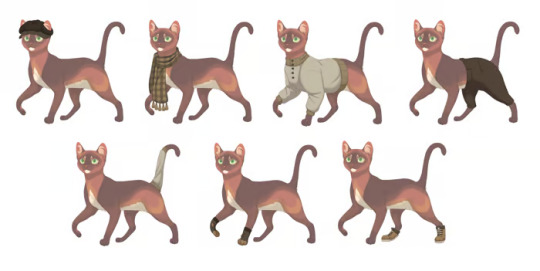
Illustration by Remmie
Alongside, we have continued working on backer accessories!
It has been our goal to develop several points of synergy in the aesthetics of our accessories. This includes backer accessories. As it turns out, several backer accessories worked together well enough to commit to one more set.
The Regal set!
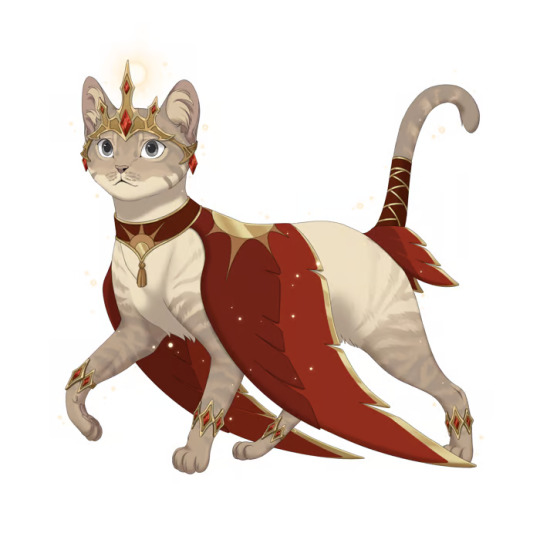
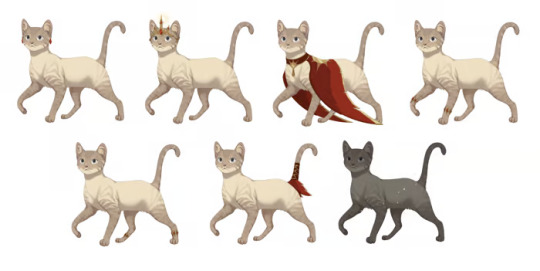
Illustration by Hydde
The Regal Crown and the Pheonix Mantle were both concepted and sponsored by SolsticeStar and Ralsha respectively. We've added to their concepts to create a versatile outfit!
We also have further renders of the Kickstarter item:
Necromantic Cloak
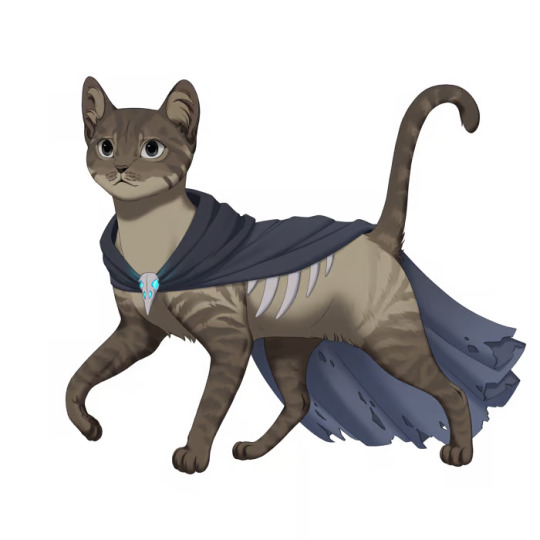
Illustration by Hydde
Dynamic Accessorizing
We wanted to take a moment to briefly talk about the dynamic layering we’ve implemented in accessories!
We’ve implemented a system which allows the back of accessories to layer behind accessories they're on top of.
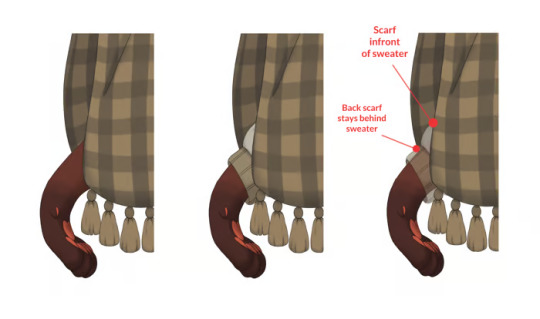
What this means: Socks will layer over the back hem of boots while remaining under the boot, items with back capes like the Necromantic Cloak can have poofy pants under them without clipping, wigs can be worn under hats or hoods without clipping the back brim, and the list goes on!
It's a small QoL addition, but it makes layered outfits much easier to construct!
Sol Site Theme
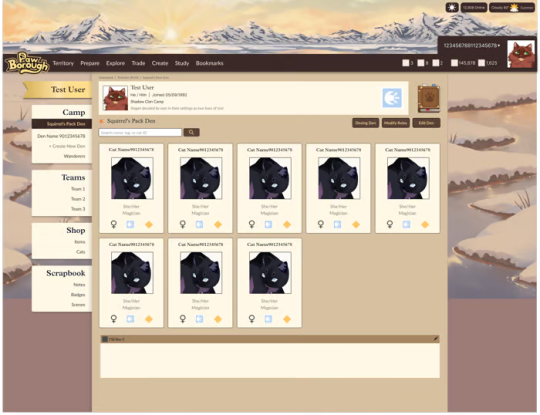
Daily Duties
Next, take a look at our designs for play of the Territory Grounds section!
NOTE: These are early concept mockups, and still need significant tweaking before final approval!
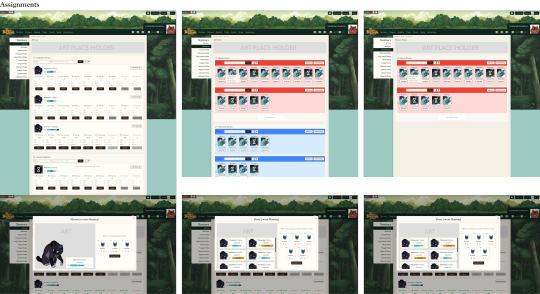
Performing a cat’s daily duty in your Territory is a consistent way for your camp to get item resources.
Cats can participate in a number of different daily activities in order to gain different items. Hunting will gain items like the Common Mouse, while fishing will gain items like the Red Snapper.
How well your cat does at a duty will depend on their statistics! In addition to playing the Guild, a cat which frequently does activities will raise their statistics.
However, we wanted to make this process customizable and streamlined.
Which is why we designed territory parties! You can create and save a party of cats with a certain territory activity, then send all the party cats on their daily duties at once.
This way, if you really need meat items, you can choose to send all your cats hunting without painstakingly clicking several times. You can curate a consistent daily gain pool while at any time choosing to deviate from it!
Parties are also versatile. Even if a cat has already been sent on a different duty, you may still send the party without that cat.
This system will need testing to find any kinks or pain points, but our goal is to reduce the amount of clicking while still requiring some resource management strategy from the user!
Map of Mewmoia
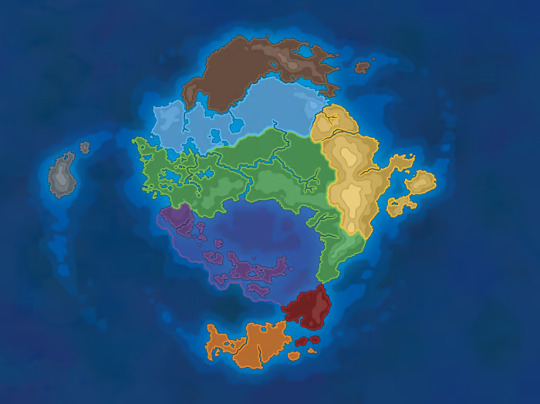
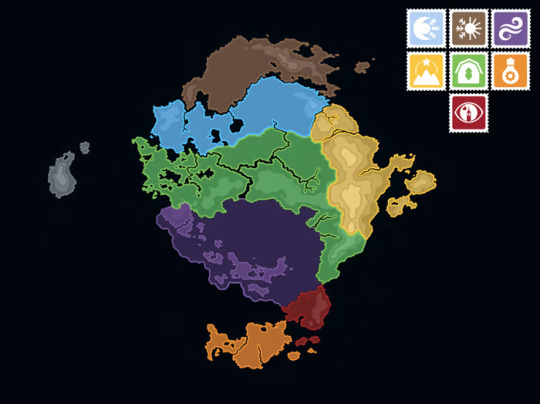
Above is the political map which presents Borough boundaries, however we also present a climate map, which outlines the conditions of each location:
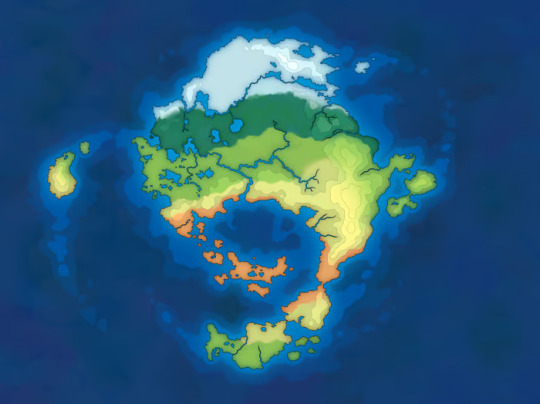
Map illustration by Hydde
Lore is finally something we can take some time to focus on.
Refreshing and lengthening the writing found on our original prototype website is now being done. We have mockups for a better, interactive lore page!
However, we must stress that this page does not take precedent over the game itself, so while we can communicate that its on our radar, we can't promise it before delivering on MVP mechanics.
Speaking of lore…
The Metropolis Logo


Illustration edits by Tybaxel The moon has now been better placed to represent the eyeshine, and a World Spire has been made front and center. This tower is sculpted to resemble a cat’s pupil, thus better fitting in with the other simplistic yet intentional visuals.
The Metropolis will have its visuals updated on our demo website during our next improvement push!
Development Update
So where are we on development?
Well, recently we wrapped up Alpha combat development. This includes movement, conditions, tile generation, NPC behaviors, item use, and combat abilities.
Introducing Errands

Take a peak at Errands, which is the Alpha version of the multiplayer Missions.
Errands are smaller, short-term jobs that only one cat may go on. They take 1-3 minutes (VS. Missions taking 10-20 minutes) and will similarly have different objectives to accomplish.
Going on an errand will still gain you experience, items, currency, and help you raise the rank of your Team, but they are tailored towards casual play. While missions will be available for longer play-sessions, errands are for when you want to do something smaller!
Here you can see the method of browsing errands. Current errands can be refreshed via clearing all of them, re-checking the next day, or a premium instant refresh. Errands can also be clipped and saved for later if you don't want to start them immediately, but see one you're intrigued by!
Dev Progress Check
Going forward, the big things we are currently working on, in order:
Daily Duties
Forums
Item Integration
Player to player trade; markets and currency
Dashboard Functionality
Cooking / Crafting Functionality
After which, all further features will be additional buffs to the loop and QoL features. Things such as a player and Team notebook to post and feature journal entries, aesthetic buffs to the scene builder (color tints on items, shadow tints, etc.), mobile QoL, the achievement badge system, a tagging system, and integrating multiplayer combat functionality.
These additions are all things we hope to prioritize adding over the lifespan of our beta!
Wahoo! Lots of good things! Everyone on the team is buzzing with excitement over how close we're getting to something fully playable. Thank you for being along for the ride!
To Summarize: We showed the Nephrune, new accessory sets and accessory dynamics, the Sol site theme, Territory Ground play, the Site Map, a new Metropolis logo, Errand setup, and the check-in for where we are in mechanic development.
What to expect next month: Alpha functionality, further asset renderings, potential recolors, potential Moontail update!
#kickstarter update#paw borough#virtual pet#indie game#pet site#pawborough#art update#development update
53 notes
·
View notes
Text
100 work from home job opportunities
1. Live Ops- www.liveops.com
2. TeleTech-TeleTech.localjobster.com
3. Amazon-Amazon.JobsOnline.com
4. Sutherland Global Services- http://www.sutherlandglobal.com/careers.aspx
5. UnitedHealth Group-https://careers.unitedhealthgroup.com/career-areas/customer-service-and-claims/customer-service-and-call-center
6. Dell-http://jobs.dell.com/north-America-jobs
7. IBM-www.ibm.com/employment
8. U.S Department of Agriculture www.usda.gov
9. Working Solutions- http://workingsolutions.com
10. Humana- www.humana.com
11. Aetna- https://www.aetna.com/about-us/aetna-careers.html
12. Intuit- www.Intuit.com
13. Kaplan- kaplan.com/work-with-us/our-culture
14. Kelly Services- www.kellyservices.us/US/Careers/KellyConnect/Kelly-At-Home
15. Cactus Communications- https://www.flexjobs.com/jobs/telecommuting-jobs-at-cactus
16. Westat- https://www.westat.com
17. Salesforce- www.salesforce.com/company/careers
18. PAREXEL- https://jobs.parexel.com
19. CyberCoders- https://www.cybercoders.com/jobs/work-from-home-php-developer
20. American Express- https://jobs.americanexpress.com
21. Vmware- telecommuting-jobs-at-vmware
22. SAP- www.sap.com/career
23. Xerox- https://www.xerox.com/en-us/jobs/work-from-home
24. First Data- https://www.firstdata.com/en_us/about-first-data/careers
25. US-Report- www.us-reports.com/jobs
26. Oracle- Oracle-Work.Jobsgalore.com/Jobs
27. CACI International- careers.caci.com/key/work-from-home-jobs.html
28. A Place for Mom- www.aplaceformom.com/jobs
29. Anthem,Inc- careers.antheminc.com
30. DellSecureWroks- telecommuting-jobs-at-dell_secureworks
31. World Travel Holdings- www.worldtravelholdings.com/careers,work-home
32. ADP- www.adp.com/careers.aspx
33. Aon- telecommuting-jobs-at-aon
34. University of Maryland University College- www.umuc.edu/visitors/careers
35. Allergan Inc.- www.allergan.com/careers
36. K12- www.k12.com/careers
37. U.S. Department of Transportation- https://www.transportation.gov/careers
38. CSI companies- thecsicompanies.com/candidates
39. Robert Half- www.roberthalf.com
40. Nielsen- sites.nielsen.com/careers
41. Red Hat- www.redhat.com/en/jobs
42. Adobe Systems- www.adobe.com/careers
43. Overland Solutions, Inc.- overlandsolutionsinc.com
44. BCD travel- www.bcdtravel.com/get-to-know-us/careers
45. Connections Education- www.connectionsacademy.com/careers
46. Deloitte- www.deloitte.com/careers
47. Apple- https://jobs.apple.com
48. Mckesson Corporation- https://careers.mckesson.com
49. Thermo Fisher Scientific- corporate.thermofisher.com/en/home.html
50. Precyse- careers.precyse.com
51. Haynes & Company- www.haynesandcompany.com
52. Pharmaceutical Product Development Inc- www.ppdi.com/careers
53. IT Pro Philadelphia- www.phillymag.com/property/2013/10/22/live-work-homes
54. Cingna- www.cigna.com/career
55. Houghton Mifflin Harcourt- careers.hmhco.com
56. Sungard Availability Services- sungardas.com
57. Infor- www.infor.com/company/careers
58. Sodexo- www.sodexousa.com/home/careers-usa.html
59. About.com- About.com/Can I Work From Home
60. Altegra Health- altegrahealth.com/careers
61. GE- jobs.gecareers.com/
62. Western Governors University- www.wgu.edu/about_WGU/employment/work_remote
63. Grand Canyon University- jobs.gcu.edu/admissions-enrollment-jobs
64. Walden University- https://www.waldenu.edu
65. Vivint- www.vivint.com/company/careers
66. BroadSpire- https://www.choosebroadspire.com
67. Covance- careers.covance.com
68. Ellucian- www.ellucian.com
69. HD Supply- hdsupply.jobs
70. Perficient Inc.- www.perficient.com
71. Teradata- https://www.teradata.com
72. Wells Fargo- https://www.wellsfargo.com/about/careers
73. Symantec Corporation- www.Symantec.com
74. Real Staffing-www.realstaffing.com/en
75. Science Applications International- www.saic.com
76. AmerisourceBergen Company- www.amerisourcebergen.com
77. Appen- www.jobs.net/jobs/appen/en-us
78. Hartford Financial Services Group- https://www.thehartfordatwork.com
79. RetailDatat- retaildatallc.com
80. SYKES- www.sykes.com/Careers
81. CARA- www.jobbankusa.com
82. Citizens Financial Group- citizensbank.jobs/work-at-home
83. CVS Health- cvshealth.com
84. Healthfirst- https://healthfirst.taleo.net/careersection/hf_ext_cs/jobsearch
85. American Heart Association- careers.heart.org
86. BMC software- www.bmc.com/careers
87. Hibu- https://hibu.com
88. inVentive Health- www.inventivhealth.com/careers
89. Rosetta Stone- jobs.jobvite.com/rosettastone
90. Erie Insurance Group- https://www.erieinsurance.com/careers
91. Deluxe- https://ww.deluxe.com
92. Clevertech- https://weworkremotely.com/jobs
93. Achieve Test Prep- www.achievetestprep.com
94. Worldpay- www.worldpay.com
95. DataStax- https://www.datastax.com/
96. CDK Global- www.cdkglobal.com
97. Teleflex- www.teleflex.com/en/careers/workingAtTeleflex
98. Aquent- aquent.com/find-work
99. Parallon- www.parallon.com/careers
100. U.S Department of the Interior- https://www.doi.gov/careers
49 notes
·
View notes
Text
A Survey of Available Lore on Baalphegor, Princess of Hell
Summoned from the Candlekeep libraries by @sky-kiss, from her ask here.

I burst through the door, scrolls tumbling everywhere. A bat flies out of my cloak and up to the rafters. Welcome to my TedxTalk wait where are you going-
Okay so. My pet topic du jour: Baalphegor. You’ll find tinfoil hats taped underneath your seats; please save those for the end of the presentation.
Sky is very much correct that the last information we have for Baalphegor is that she is “missing”, with no more real information than that. We have no information on the timeframe of her disappearance relative to Raphael’s own residence on Cania, so there’s a lot of room for extrapolation.
I have compiled what is, as far as I am aware at least, every notable reference to Baalphegor. Note: if you have knowledge of any others that I’ve missed, please tell me.
Most of the primary and/or more modern (as in, printed in the 21st century) sourcebooks just refer to Baalphegor in passing, as seen in the entire sum of her appearance in the Fiendish Codex II (my beloved):
Meanwhile, his new courtiers, selected for their ability to deliver innovative applications of his hellfire techniques, work to solidify their positions. Foremost among this group are Baalphegor (Mephistopheles’s consort) and the pit fiend Buldumech.¹
We have to go way back to get anything of interest for her, back to the 1980s, and the Dragon and Dungeon magazines. These were the two official magazines published for players of Dungeons & Dragons, filling a role similar to that of modules in the present day version of the game.
Baalphegor is referenced first in Dragon issue #76, published in 1983. We actually find a lot of detail about her here, the most pertinent of which is:
Baalphegor is consort to Mephistopheles, and a most highly regarded she-devil. Personally attractive (and a practiced diplomat), she is charming in manner and artful in thought; she has invented many of the strategies and devices used in the hells. Asmodeus regards her as one of his most valuable assets, and tolerates the machinations of Mephistopheles largely because of her. Baalphegor’s own desires are seldom revealed; she appears loyal to the hells and devoted to Mephistopheles, and manages to avoid making a distinction between the two.²
This tells us that not only is she clever and diplomatic, but also staggeringly intelligent. Mephistopheles spends a great deal of his focus on research and development of new spells and magical items - for Baalphegor to be the source of “many of the strategies and devices used in the hells” says a great deal about her intellect.
As well, the regard Asmodeus holds her in is wildly unusual for any devils, let alone the Lord of the Ninth. True loyalty among devils is largely regarded as a character flaw, and never to be trusted.
Dragon #76 goes on to describe her physical appearance (or one of them, at least):
Baalphegor is a musical-voiced, beautiful female, apparently human, save for her ruby-red eyes, forked tail, and slim, delicate leathery wings. Her feet are human in appearance, and she is sleek and curvaceous, with cinnamon-brown skin. She appears young and carefree, but when angered her light voice can crack like a whip, and her eyes flash fire.²
Baalphegor appears again in a module in Dungeon issue #2, published in 1986. In this adventure she is, unknown to the player characters, their true antagonist, controlling events and planning her machinations from the shadows, a true devil to her core.
In the module, she appears as a child, named Belle Fagor, keeping tabs on the members of a devil-summoning coven. (It is important to note that she is not the devil they summoned, but a lesser one.) Her stated motivation for this ruse is:
Desiring a break from the infernal politics of the Nine Hells, Baalphegor is enjoying herself and regards her interplanar tinkering as a sort of game, with its own rules.³
She’s on vacation.
We find another description of Baalphegor here, one that matches physically that of Dragon #76, but restates her relation to Asmodeus in an intriguing way:
One of the Nine Hells’ most artful and beautiful she-devils, Baalphegor is an honored diplomat and a consort to Mephistopheles, and counts Asmodeus as a close ally.³
Once again, extremely out of the ordinary for most devils to actively consider true loyalty to or from another, let alone in this manner, that seems almost reciprocal when held against the excerpt from Dungeon #76.
The final excerpt of note from Dungeon #2 is this:
Though extremely powerful, Baalphegor was not included in order to crush the player characters. She should be played with care and cleverness, befitting her extreme intelligence.³
The final mention of Baalphegor to be found - in Dungeon #135, published in 2006 - is only in passing, referencing her disappearance with glancing indifference in favor of the magic artifact that shares her name:
Baalphegor’s Grace is a potent artifact reputedly crafted over six hundred years ago by the archdevil Mephistopheles, who created the vial to capture the blood and tears of his consort Baalphegor for loan to favored cultists on the Material Plane. Recent events in Hell have claimed Mephisto’s attentions for several decades, and in that time he has lost track of Baalphegor’s Grace. Any character who successfully drinks from the vial finds that he becomes linked to a group of powerful erinyes devils known as the Blessed Angels. These devils once served Baalphegor as elite guards, yet since her disappearance and the artifact’s fall into the Material Plane, these erinyes instead serve whoever drinks from the vial.⁴
From this excerpt, we learn several things: that Baalphegor has been in existence for longer than 600 years (pretty much a given already), that there is some manner of power conveyed within her blood and tears, that a group of erinyes - the furies of the Nine Hells - formed her retinue, and that she has, at some point in time, disappeared from Cania.
Alright… do you recall those tinfoil hats? Under your seats?
Please don them now.
What follows is materially the stark opposite of what preceded it. Above is simple lore, derived directly from the source material with no diffusion. This next is simple headcanon and speculation, albeit entirely plausible based on the existing lore.
To wit, I propose that Baalphegor might be two things:
an aspect of Asmodeus
an earlier iteration of the incubus known in present-day as Haarlep

Stick with me you already put the hats on
Okay, so every archdevil can make an aspect (or multiple, if they have the spare power for it), described as such:
An aspect is a physical embodiment of a portion of an archdevil’s life force, created to serve as a proxy on another plane without placing the archdevil in any actual danger. An archdevil and its aspect have separate bodies but share the same mind; what one knows, the other knows.⁵
Baalphegor being an aspect of Asmodeus is truly one of the only reasons I can fathom for why they would both be specifically noted to consider the other a staunch ally. It also makes a great deal of sense. Asmodeus is not easily able to travel out of Nessus due to his vast power and its effects, so aspects are his primary method of directly interacting with affairs on any planes.
Aspects of Asmodeus could be found anywhere in the planes where they advance Asmodeus’s main goals…⁶
Many of Asmodeus’s aspects are unhidden effigies of their originator, said to “evokes the same fear that its master does, and other devils are extremely cautious about associating with an aspect of Asmodeus on a personal level."⁶
With this in mind, it tracks that Asmodeus would, on occasion, play the long con (something he is in fact famous for), and fashion an aspect far removed from his regular, all the better to have an agent of his own, one truly loyal, to plant among the other Circles, all unsuspecting.
As for the Haarlep connection, well…
First of all, Baalphegor’s long-time but ambiguously dated disappearance certainly allows for the possibility in simple chronological terms.
Second, it would make sense for Mephisto to make use of someone he, presumably, trusted to remain loyal to him above his son, and who better in that regard than Baalphegor.
Third: Think about it. Isn’t it hilarious to consider? Doesn’t it fill your mind with chaotic glee to imagine?
Mephisto, thinking himself a genius, sending his own most loyal to keep tabs on his disobedient but oh-so-aspirational son. All the while never knowing Baalphegor was serving the same purpose in regard to him, and there was never an action he took truly hidden from the watchful eye of Asmodeus.
Thus concludes my presentation. Thank you for your attendance, and please consider making a small donation to your local chapter of the Candlekeep Scholars, to keep the spark of knowledge alive! All honor to the Binder.⁷
I am carried away on a cloud of bats.

¹ Fiendish Codex II: Tyrants of the Nine Hells. 2006, p. 69
² Dragon Magazine #76. August 1983, pp. 28-29
³ Dungeon Magazine #2. November/December 1986, p. 37
⁴ Dungeon Magazine #135. June 2006, p. 71
⁵ Fiendish Codex II: Tyrants of the Nine Hells. 2006, p. 141
⁶ Fiendish Aspects II: A Web Enhancement for Fiendish Codex II. 2007, p. 23
⁷ One of the titles of Oghma, greater god of inspiration, invention, and knowledge.
#bg3 raphael#bg3 mephistopheles#baalphegor#bg3#asmodeus#bg3 meta#if you ask me how long i spent on this i will smile at you while crying tears of blood#haarlep#my meta#lore#voidling speaks#baator#d&d#forgotten realms#raphael#sky-kiss#if you saw the reblog version of this i didn't realize those don't show up in tags and i didn't put in four hours of work for nothing#meta
33 notes
·
View notes
Text
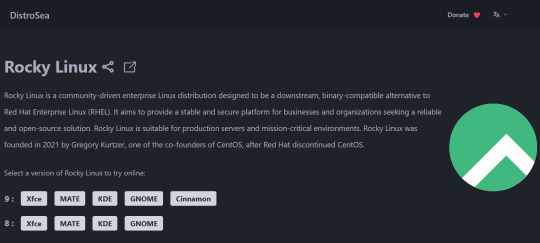








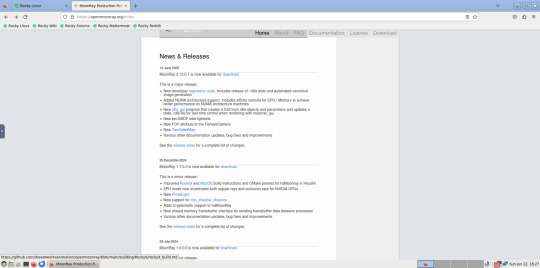

Using Distrosea, I had a look at Rocky Linux 9.
Rocky Linux is a Linux distro designed for the VFX industry. It serves as a drop in replacement for Red Hat Enterprise Linux.
Rocky Linux website:
https://rockylinux.org/
Here is a example of an animation studio that uses the distribution.
DreamWorks' migrated their workstations and servers from Red Hat Enterprise Linux 7 to Rocky Linux 9 in 2023 and completed the rollout the following year.
DreamWorks Animation website:
https://www.dreamworks.com/about
About RHEL:
https://en.wikipedia.org/wiki/Red_Hat_Enterprise_Linux
About Rocky Linux:
https://en.wikipedia.org/wiki/Rocky_Linux
Here are some reasons DreamWorks Animation moved from Red Hat Enterprise Linux:
- Red Hat dropped the CentOS Linux operating system in 2020. They ended support for version 7 in 2024.
CentOS was an downstream version of Red Hats main operating system without its branding and support. Rocky Linux fills this void left by CentOS.
DreamWorks used CentOS alongside Red Hat Enterprise Linux. Both their Workstations and server set-ups were migrated to Rocky.
- Red Hat further restricted access to its source code in their Enterprise focused operating system.
- Rocky Linux has become a very popular open source operating system for the VFX industry and features many modern advancements and desktop environment choices such as GNOME, KDE, XFCE, MATE and Cinnamon.
- Like all Red Hat based builds of Linux, Rocky Linux uses the DNF (Dandified Yellow Dog Updater) extension to manage application installations via the Dnfdragora package manager. However it also uses the universal Flatpak extension to install applications from the GNOME software centre.
- DreamWorks animation pipeline uses their recently opened sourced Moon-Ray renderer, which is built on Rocky Linux. The source code is available on GitHub.
The tool supports Linux and Mac OS. Here is a link to the Open Moon Ray installation and compiling on Rocky:
https://docs.openmoonray.org/getting-started/installation/building-moonray/general_build/
It features a set of commands for installing various graphics libraries (for the render tool and Houdini, a character effects development tool), as well as toolsets which can be applied to programs such as Blender.
There are many YouTube videos about the open sourcing of Moon-Ray itself and some showcases of it working.
Rocky Linux is a downstream, complete binary-compatible release using the Red Hat Enterprise Linux (RHEL) operating system source code.
Unlike RHEL, Rocky is completely free to use. It is released under the BSD 3-Clause license, which allows free use, modification, and distribution.
There are no licensing or subscription fees associated. RHEL is a commercial product from Red Hat and requires a subscription license to use.
Rocky's selection of desktop environments can be installed independently in their own disk image file.
Each one can also be tested on a live USB before installation.
Users can also install their desktop environments of choice using the command line.
When running the system on a server (which is the common way of using Linux systems) it will just have the command line interface when a monitor is plugged in.
Distrosea:
https://distrosea.com/
The latest build is Rocky Linux 10, released in June 2025. The version available to test on Distrosea is 9.
I tried GNOME, MATE, XFCE and KDE.
As this MATE desktop edition didn't come with either Dnfdragora or GNOME Software, I tried installing Blender (an open source animation tool) using the 'sudo dnf install blender' command in the terminal.
However, due to the graphics limitation of the VM, the program couldn't launch.
To install software graphically, you can use GNOME Software Centre that comes on GNOME. This can be used on other desktop environments as well.
A good Linux distribution if you are using graphics heavy applications and need a robust enterprise grade operating system without the cost!
Another Linux distro that is similar is Alma Linux, another enterprise focused operating system that uses the same foundations as CentOS.
4 notes
·
View notes
Text
Can Open Source Integration Services Speed Up Response Time in Legacy Systems?
Legacy systems are still a key part of essential business operations in industries like banking, logistics, telecom, and manufacturing. However, as these systems get older, they become less efficient—slowing down processes, creating isolated data, and driving up maintenance costs. To stay competitive, many companies are looking for ways to modernize without fully replacing their existing systems. One effective solution is open-source integration, which is already delivering clear business results.
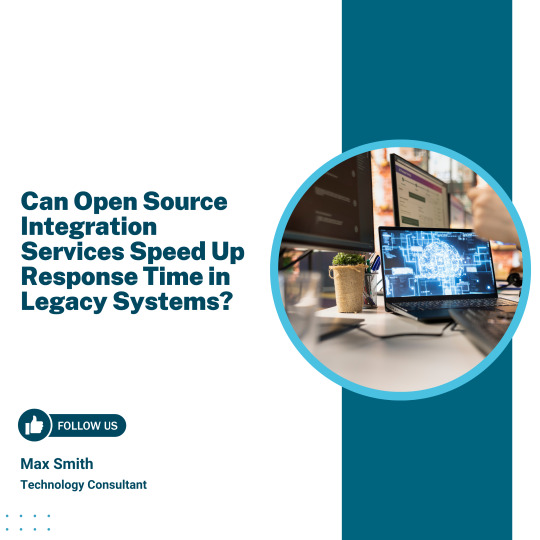
Why Faster Response Time Matters
System response time has a direct impact on business performance. According to a 2024 IDC report, improving system response by just 1.5 seconds led to a 22% increase in user productivity and a 16% rise in transaction completion rates. This means increased revenue, customer satisfaction as well as scalability in industries where time is of great essence.
Open-source integration is prominent in this case. It can minimize latency, enhance data flow and make process automation easier by allowing easier communication between legacy systems and more modern applications. This makes the systems more responsive and quick.
Key Business Benefits of Open-Source Integration
Lower Operational Costs
Open-source tools like Apache Camel and Mule eliminate the need for costly software licenses. A 2024 study by Red Hat showed that companies using open-source integration reduced their IT operating costs by up to 30% within the first year.
Real-Time Data Processing
Traditional legacy systems often depend on delayed, batch-processing methods. With open-source platforms using event-driven tools such as Kafka and RabbitMQ, businesses can achieve real-time messaging and decision-making—improving responsiveness in areas like order fulfillment and inventory updates.
Faster Deployment Cycles: Open-source integration supports modular, container-based deployment. The 2025 GitHub Developer Report found that organizations using containerized open-source integrations shortened deployment times by 43% on average. This accelerates updates and allows faster rollout of new services.
Scalable Integration Without Major Overhauls
Open-source frameworks allow businesses to scale specific parts of their integration stack without modifying the core legacy systems. This flexibility enables growth and upgrades without downtime or the cost of a full system rebuild.
Industry Use Cases with High Impact
Banking
Integrating open-source solutions enhances transaction processing speed and improves fraud detection by linking legacy banking systems with modern analytics tools.
Telecom
Customer service becomes more responsive by synchronizing data across CRM, billing, and support systems in real time.
Manufacturing
Real-time integration with ERP platforms improves production tracking and inventory visibility across multiple facilities.
Why Organizations Outsource Open-Source Integration
Most internal IT teams lack skills and do not have sufficient resources to manage open-source integration in a secure and efficient manner. Businesses can also guarantee trouble-free setup and support as well as improved system performance by outsourcing to established providers. Top open-source integration service providers like Suma Soft, Red Hat Integration, Talend, TIBCO (Flogo Project), and Hitachi Vantara offer customized solutions. These help improve system speed, simplify daily operations, and support digital upgrades—without the high cost of replacing existing systems.
2 notes
·
View notes
Text
Below you will find the character profile for my One Piece OC (one of them, anyway. I have at least five, but I'll be working the most closely with this one for now).
So, here we go. Only been working on this shit for like...three days. Okay, technically over ten years since I used to write her ages ago when I was on fanfiction.net, but I've redone a lot of things.
I'm already in the process of working on a novel-length Mihawk x AFAB!OC fanfic, so here's the overly extensive character sheet for my OC because I always put way too much effort into character development.
The character history practically devolves into a mini fanfic itself around the middle by total accident, but whatever.
The fanfic(s) will toe the line between Live Action and Manga canon. We'll just call it AU and leave it at that.
Karimi Lionne
Associated fanfics: Hearing Problems (coming soon to an Unknowable Horror near you) and Any Way The Wind Blows (eventually, bear with me)
Age: 24
Occupation: Pirate; Mercenary
Abilities:
Kiku Kiku no Mi: A Paramecia type devil fruit that grants the user the ability to hear...well, everything, all the time. Within a certain range she, can hear the thoughts of people around her. The range varies with her focus; standard, it's anyone within a range of about fifty feet in any direction. She can close that circle down to either listen to one person's thoughts, or expand it to search a city or town for a particular person. Activated (which she hasn't yet), it allows the user the ability to plant thoughts in others' heads, and potentially control their thoughts.
She considers the ability more of a curse than a blessing since she has never managed to hone it quite well enough to shut it off entirely, and can often be found sitting at a dock or on a beach with her feet in the salt water, just to get some peace and quiet in her own head.
Blades: Karimi carries a pair of daggers with ornately carved ivory handles, the head of a lioness carved into the top of each hilt, in sheaths at either side of her belt. They belonged to her grandmother, who raised her from age four to age fourteen, and also taught her most of what she knows in combat. She also keeps a handful of throwing knives in a holster belted to her right calf, a couple inches below her knee.
Her fighting style relies primarily on agility, evasion, and accuracy rather than raw strength due to her relatively small stature of 5'2".
Haki: Not a master by any means at all. Learned from Red-Haired Shanks during her brief stint working with his crew, used largely to assist in suppressing her devil fruit abilities and making them more manageable. Not really proficient enough to use it for any other application.
Music: Karimi was taught to play guitar, fiddle, and piano by her grandmother, but she hasn't touched an instrument since her grandmother died, so she doesn't know how much of the ability she has retained. Karimi also learned several sea shanties from her, and often hums or quietly sings them to herself while out to sea.
Appearance:
Faceclaim: Jane Fonda c. 1960s, facial structure, skin and hair edited via Faceapp


Long, dark green hair, in wild curls that she can't do much of anything with except tie back in a bun or stuff under a hat. Sharp emerald green eyes. Fair-skinned with a handful of freckles.
The Resting Bitch Face is strong with this one.
Slender, petite, 5'2" tall.
Tends toward wearing long-sleeved shirts/dresses to cover the scars on her arms. Almost always wears her grandmother's hat, an old and tattered brown leather tricorne with a patch on the front left brim and a few more in the back.
Personality:
Confident, toeing the line of outright arrogance at times. Humor that ranges from dryly sarcastic to quite silly, depending on who she's around. Guarded. Brooding. Cynical. Empathetic. Gentle. Uses sarcasm as a coping mechanism. Not easily offended. Prominent issues with self-harm and PTSD.
Backstory (prior to beginning of fic)
Karimi has next to no knowledge of her origins. She knows her mother died shortly after giving birth to her, that she was born on her father's ship, and that she got her hands on a devil fruit the crew had found and ate it when she was three or four years old, not knowing what it was. Shortly thereafter she was taken to live with her grandmother on a remote island village called Conch Cove, somewhere on the Grand Line.
Her grandmother, Helena Lionne, had been a pirate captain shortly before Gol D. Roger came around and into his earlyyears of piracy, but Karimi didn't know much about her history. Helena was a powerful haki user, and was able to use the power to dampen Karimi's devil fruit abilities, largely for the sake of the girl's own comfort and sanity. Helena trained her to fight in order to defend herself in the event that she ever left the island, as well as survivalist training. She wasn't shy about telling Karimi that the world could be a dangerous place, particularly for a woman on her own, amd wanted to ensure that her granddaughter had everything she needed to safely make her way in the world.
Karimi found out more about her grandmother a week after her fourteenth birthday.
She discovered that her grandmother had been captain of the Siren Pirates. She discovered her grandmother possessed the abilities of the Mizu Mizu no Mi (logia type, water). She discovered that her bounty was in the billions...and still very much active.
The Marine Admiral who showed up to the island, Admiral Jackson "Volcano" Vesper, brought a large crew with him, with no intention of taking Helena alive. His moniker stemmed not only from his explosive temper, but also from his own devil fruit abilities—the predecessor to Fire Fist Ace, he possessed the power of the Mera Mera no Mi (logia type, fire). He also possessed an intense desire for revenge on the woman that had killed his father.
He didn't bother revealing how he managed to track her down—he simply went in guns blazing. The battle between him and Helena, between his crew and what remained of hers, waged for nearly two entire days, leaving several Marines and villagers dead and the town in total ruin. Karimi stayed hidden the entire time as her grandmother had asked her to, but with Helena's haki focused on defending herself and her allies, Karimi could hear everything with her devil fruit abilities.
She could hear the moment when Admiral Vesper's first mate got the drop on her grandmother, pinned her to the ground with the butt of his rifle, which he had coated in a layer of sea stone, instantly sapping her strength and her devil fruit powers.
Karimi could hear Vesper's thoughts, his intentions to humiliate her, kill her, and return to Marineford with her head.
And Karimi emerged from hiding and managed to toss a throwing a knife into the back of his leg.
She was captured almost immediately. Her physical resemblance to her grandmother in the woman's younger years was noted immediately by Vesper, and he knew in that instant that he had won.
And Karimi knew it too, with the man's bowie knife to her throat.
He agreed to let Karimi go in exchange for Helena's life, and Helena gave in without a second thought when she saw the bowie knife start to cut into her granddaughters neck.
He took the remainder of Helena's old crew as prisoners—the only four other villagers on the island left alive, but not before slitting Helena's throat and sawing her head from her neck with his bowie knife, while Karimi was held captive and forced to watch.
Then he and his men left her there on the remote island, in a ruined village with nothing but the corpses of friends and neighbors and the woman who raised her to keep her company.
She doesn't remember much of the following two weeks. She knows she was able to make a spear out of a throwing knife and a shovel handle to catch fish for food in the shallows around the island. That she had a fresh source of water in the form of a pond. She knows she was nearly through building a raft out of the rubble that was left of the town when another marine ship arrived at the island, captained this time by Vice Admiral Garp the Fist. She was understandably beyond wary of Marines, and she fought tooth and nail, kicking and screaming, when they took her back to their ship.
They took her throwing knives and her grandmother's daggers, and she was forced to stay in the brig because she made very clear that she would gladly gut any marine who came near her. She was still treated with kindness and provided full meals given her situation, and as she bided her time and got her strength back she formed a plan of escape.
She was able to use her devil fruit powers effectively in her escape—by listening around and finding the easiest target. This came in the form of a fifteen year old cadet who would check on her and talk to her during his downtime. He thought she was pretty and couldn't believe she had managed to keep herself alive for two and a half weeks after what she had been through, admired her sheer strength of will. It was incredibly easy to sweet-talk him into getting her weapons back to her, playing on his sympathies by telling him that they were all she had left of her grandmother.
She hid them once she had them, and did a little more sweet-talking...until he agreed to steal the keys and get her out of the cell. Once she was out, she wasted no time in knocking him out, stealing his uniform, stuffing her hair under the hat, and discreetly stealing enough rations to last herself a week and slipping away on a dinghy.
She had no idea where she was or how she was going to get anywhere, but she wasn't exactly of sound mind after the trauma she had endured. Her only thoughts at the time were that she wanted to put as much distance between herself and the Marines as possible.
She was picked up by a merchant vessel after a few days, and they took pity on her story and allowed her to remain on board the ship, assisting in cooking and cleaning in exchange for room and board and safe passage to their next stop. They were bound for Loguetown in the East Blue, and that suited her just fine.
Loguetown was a large city right outside the only passage onto the Grand Line, and it gave her plenty of options for work. She worked odd jobs that provided her with room and board, saving up money over the course of the following two years.
She was working in a tavern and staying at the attached inn when the Red-Hair pirates made port in Loguetown, and she knew she had her ticket back onto the seas, with only one goal in mind—to find her father, and tell him what had become of her grandmother.
Her memories of him were too vague for her to give any decent description, but she wasn't telling anyone her reasons anyway. She waited for her shift to end before approaching Shanks himself and asking, confidently, to join his crew.
That got a tremendous laugh out of the crew at large, but only a little bit of a chuckle from Shanks himself.
"And why would a little slip of a thing like yourself want sail around with a bunch of old men?"
"That's not really important." She sat down at the neighboring table at this. "But what I can provide your crew is."
"And what might that be, love?"
"I've trained with daggers and throwing knives since I was four years old. I also possess the abilities of the Kiku Kiku no Mi."
Yasopp, sitting between Shanks and his first mate Benn Beckman with bis feet propped up on the table, snorted at that, grinning. "So what, it improved your hearing?"
Karimi leveled her eyes with his. "Immensely," she daid. She gave a small smile...and began narrating his thoughts out loud. "'The hell is this girl's deal? Does she have any idea who she's even talking to right now? She can't even be much older than my—Wait. What the hell? What the hell is she—'" His feet slipped off the table, his mouth falling open as he registered what was happening. "'Holy shit, is she in my head? Is—'"
"Okay, you made your point, cut it out!" he half-shouted, staring at her in alarm.
No one was laughing anymore—and she knew she had their full attention now.
"That," Shanks said lightly, the amusement gone from his eyes and replaced with caution—but also intrigue, "is a very dangerous ability for someone as young as yourself to possess."
"I've had it since I was four. I've learned to manage it."
That was, of course, only half true—she could deal with it, yes, but she couldn't fully control it.
After a long, silent moment, in which members of his crew exchanged glances and Shanks quietly studied her, he leaned back in his chair, nodding to himself.
"Let's give you a real test," he said, leaning his arm over the back of his chair. "See how well you can put your abilities to use." Karimi lifted her eyebrows, waiting. "I want you to sneak into the Marine base here in Loguetown. Find where they keep the treasure and money they've confiscated from pirates and thieves they've arrested...and walk out with as much as you can carry." He lifted his bottle of rum from the table. "Undetected."
"Have you lost your goddamned mind?" Shanks glanced across the table at Benn when he spoke up.
"That's been gone for years, but go on."
Benn gave a growl of annoyance at his captain. "She's a kid. You're talking about sending a kid into a damned Marine base to steal from them. That's a suicide mission."
"The girl wants a chance to prove herself," he said simply, shrugging a shoulder. He looked back at her. "That's my offer, love. We're setting out no later than noon tomorrow. You bring your haul to the ship, you can come with us."
Karimi nodded, and stood from her chair. "Then I will see you all no later than noon tomorrow."
A few hours later, when the tavern closed for the night and the crew returned to the ship, they were met with the sight of Karimi, wearing a Marine uniform and sitting on a sizable burlap sack right in the middle of the deck. She stood from it and kicked it over, spilling gold bricks, jewels, and piles of Berry notes and coins across the deck.
Sneaking into the base had honestly been a piece of cake—she found a half-drunk Marine a couple years older than her at another tavern, did a little sweet-talking and got him back to her inn room. Suggested some rather kinky activities that would involve him stripping down and being tied to the bed and he jumped on it. Once he was securely tied, she gathered her few belongings, put on his uniform, put a do-not-disturb sign on the door, and slipped out the window.
It had taken longer to find and get into the rooms where they kept any seized contraband, but it had been as simple as keeping her head down and listening. Hiding and ducking down empty halls when she heard anyone drawing too close. The entire ordeal had taken just under three hours.
After a long stretch of silence, it was Benn Beckman that voiced what everyone was thinking.
"Holy shit."
Shanks grinned over at him. "Suicide mission, aye?"
She was officially welcomed aboard the ship at this, as promised, but there was some deal of commotion when she told them her name.
Particularly her surname.
She learned very quickly that both Shanks and his first mate were familiar with her father—and that Benn utterly despised him. To the point that he, however briefly, threatened to throw Karimi off the ship himself against his captain's will if necessary. The brief altercation ended in Benn storming off to the gun deck on his own, leaving Karimi wondering if she had made the right choice of crew.
Shanks was far more personable.
He told her about her father—Lyon D. Rollo.
He described her father as having been like "the annoying little brother he never wanted." Told her about their time spent as deckhands aboard the Oro Jackson. About his devil fruit abilities that had caused absolutely nothing but trouble for years because they were incredibly difficult to master without massive repercussions: the Kaze Kaze no Mi (logia type: wind).
Told her how they met Benn not long after Roger's execution after setting out on their own—Benn and his younger sister, Sedna, who he had looked after on his own since he was around sixteen and she was six, when their parents had been killed by raiding pirates.
Who Karimi's father had apparently fallen inmediately head over heels for. Said he refused to leave town without her, and did exactly as he set out to. Benn had refused to leave her side, and came with them despite his hatred of pirates at the time.
It was a year later that Shanks and her father had gone their separate ways. It had always been the plan, as they were both too stubborn to accept being anything but captains. Once they gathered enough of their own crew members and got their own ships, they parted as friends. Benn stayed with Shanks, and Sedna remained with Lyon.
It wasn't long after that they recieved word that Sedna had been killed during a firefight with the Marines.
"He never mentioned a child," said Shanks, shaking his head and looking at Karimi like he was looking at a ghost as he leaned forward against the railing around the bow. "I imagine he couldn't have been much older than seventeen." He shook his head a little, still in disbelief. "I don't think I need devil fruit abilities to know what you're doing here."
Karimi nodded shortly. "Do you know where—?"
"No, unfortunately."
No one knew where Lyon was—it had been five years since Shanks actually last saw him, and he and his entire crew seemed to have just vanished into thin air around a year ago, despite still holding active bounties.
Karimi didn't tell him anything else, not why she was looking for him—only that she was, and that she had no intention of remaining with the Red Hair crew for the long term. Just long enough to get a bit of money together and purchase her own ship, something small like a sloop that she could handle by herself.
She ended up sailing with the Red Hair Pirates for around two years, give or take few months. Shanks became something of a mentor to her over that period of time, taking time to train her in Busoshoku Haki, the same type of Haki that her grandmother had used to repress Karimi's Devil Fruit abilities, so Karimi could use it herself when she wished to. It wasn't fool-proof, but it at least helped lessen the mental load.
Once on her own, Karimi ultimately began working as a mercenary; taking on jobs with various pirate crews that required stealth or a subtle touch, avoiding Marines as much as possible, and attempting to gather any information she could about her father, but to no avail on the latter front—it really seemed like he and his crew had just vanished into thin air. His bounty was still active, along with those of his first mate and officers, but no one had heard hide nor hair of them in literaly years.
Nothing much changed for her until Karimi took a job from the Buggy Pirates a few years later, at twenty-four years old. Buggy was searching for a map of the Grand Line, and he needed someone to steal it for him, since he and his crew more or less stood out like sore thumbs and couldn't very discreetly sneak into the naval base in Shells Town where it was being kept. She was reluctant to accept—she usually avoided jobs that had anything at all to do with the Marines, but Buggy made an offer she couldn't refuse.
He claimed to have information about her father that he would gladly trade for the map.
She kept her ship anchored next to Buggy's overnight to set to preparing, planning to make way for Shells Town first thing the following morning...but news came down the grapevine that night that the map had been stolen during a break-in by another pirate crew into the Marine base.
In his rage that his plans were foiled after spending months gathering information, Buggy laid the blame on the hired hand—that she had left immediately, she could have beaten the other crew to the base and gotten the map first. He ultimately sunk her sloop, nearly with her on it before she managed to gather her most valuable items and get herself onto Buggy's ship, where he informed her she would be working for him until her debt at failing to get him the map was paid off—now she was going to have to steal it from the pirates that had taken it.
Karimi had little choice but to agree—being a devil fruit user, it would be far too risky for her to steal a dinghy and take her chances with thr open oceans.
They found the crew on a schooner and took them prisoner easily enough, given that there were only three of them. Karimi recognized one of them from a description Shanks had mentioned during her time with the Red Hair Pirates of the boy he had lost his arm to a sea monster saving (a story that she had honestly thought had to be an exaggeration), who claimed to be their captain and insisted he was going to be king of the pirates...while the other two claimed they weren't even a crew.
Whatever the case, Karimi knew they were her ticket out of servitude to the Buggy Pirates, and mutinied against them the second that the odds shifted in favor of Luffy, Zoro, and Nami.
Luffy was more than happy to welcome her aboard their tiny ship, especially on learning that she knew Shanks. She didn't tell them of her devil fruit abilities, still keeping them suppressed with Haki, a mistake she would regret in the next island they made port at due largely to their schooner springing a leak. They lucked out on landing in a town with a shipyard, but none of them really had a Berry to spare between them to actually purchase a new ship—the vast majority of the money that Karimi had saved herself had sunk to the bottom of the ocean with her own ship amd most of her worldly possessions.
On meeting and quickly befriending Usopp at the shipyard and learning the owner of the place was his "best friend," they had something of a plan, if a bit of a ridiculous one—Luffy was convinced that if he just talked to Kaya and explained their situation, she would just give him a ship and they could be off and on their way.
Both Karimi and Zoro recognized the butler Klahador, but couldn't quite put their finger on why. This was Karimi's mistake—she didn't think enough of it to release her haki and just listen in on his thoughts. It wasn't until everything later fell apart in Kaya's mansion that she did release her haki and quickly learn he was Captain Kuro, a cutthroat captain who had been believed dead for years, that he had been poisoning Kaya for years, and that he planned to murder Kaya and take over the estate himself that night.
She also learned while her abilities were active that Nami had every intention of stealing the Grand Line map and taking it to the pirate crew she was serving against her will. By this point Karimi had developed a soft spot for all three members of the Strawhat Crew (even if two of them still claimed not to be a crew), but she decided not to confront Nami about it—yet.
Kaya was more than happy to gift them a ship after they helped defeat Kuro and freed her from his suppression. She offered Karimi one as well, but she declined, stating that she would prefer to purchase one herself once she had the means to do so—but that she would happily return to Syrup Village and purchase one from Kaya's family's shipyard. In truth, she was honestly enjoying her time with the ragtag little crew, and wanted to stick around with them just a bit longer to see how far Luffy's ambitions could take them.
Usopp joined them at this point as the crew's sharpshooter. They were intercepted not far from Syrup Village by a Marine ship, and Karimi recognized Vice Admiral Garp almost immediately—as did Luffy, to her and the others' astonishment on finding our that Garp was his grandfather. Luffy was able to use his devil fruit abilities to deflect a cannonball thrown at their ship by Garp, and damage Garp's ship enough for them to slip away into a dense fog and lose their pursuers.
They happened by pure luck upon the restaurant ship Baratie, where our story begins in earnest, following Luffy's idiocy at trying to pass off a very expensive bill with an I.O.U. and getting stuck washing dishes in the kitchen to pay it off.
Relationships
Helena Lionne (OC): Grandmother, deceased. A powerful pirate captain in her heyday, Helena disappeared from the seas without a word one day and no one really knew where she had gone. Helena raised Karimi from age four to fourteen, when she was tragically murdered by a revenge-crazed marine admiral whose father Helena had killed years earlier when she was still pirating. Karimi looked up to her immensely and loved her to death, and thinking about her still hurts.
Lyon D. Rollo (OC): A active pirate captain on the grand line, though no one has heard hide nor hair of him or his crew (the Hurricane Pirates) in years. She's been trying to find him for the past ten years, to tell him what happened to her grandmother/his mother, since Karimi was the only witness left alive and no one else would be able to tell him exactly what happened. It doesn't help that she last saw him at four years old, and remembers next to nothing about him. He's actually the one who gave her the hat—he took it when he left home at thirteen to become a pirate himself, and left it with her when he took her to her grandmother. (A/N, if and when I ever get to working on Any Way The Wind Blows, it will be about his history.)
Red-Haired Shanks: Working with the Red-Hair pirates for two years led to her becoming fairly close with Shanks. He had known her father over two decades and became quite protective of her as a direct result, with her looking at him almost as a father figure as well as a mentor.
Benn Beckman: The first mate of Red-Haired Shanks, Karimi learned from Shanks that her mother had been Benn's younger sister, Sedna, and that Benn absolutely despised her father and blamed him for his younger sibling's untimely death. As a result, Benn spent a while both wary and untrusting of Karimi and treating her with indifference that bordered on hostility; but he eventually let it go, accepting that she was capable (and, in his own words, "a hell of a lot smarter than Lyon D. Dipshit"),
The Marines: Karimi positively despises Marines, with the sole exception of Garp since has come to recognize that she wouldn't be alive if not for him, though good luck getting her to admit it.
Luffy: For her short spell traveling with Luffy and his "crew," she bonded with Luffy pretty quickly, coming to see him like a goofy little brother. He absolutely reveled in hearing stories about her time on the ocean, especially any that involved her time on Shanks's crew. She's quick to scold him for his naivety and questionable decisions, but it's mostly out of care; his ambition is definitely infectious, and she wants to see him achieve everything he's set out to do.
Nami: As the only other girl on the Going Merry, Karimi did her best to get close to Nami, especially on learning about her tragic situation with the Arlong Pirates via her devil fruit abilities, but Nami makes herself intentionally distant.
Zoro: She butted heads a fair bit with Zoro, largely due to both of them being exceedingly sarcastic, but she doesn't hate him by any means. Quite the contrary, she admires his abilities as a fighter and passes time sparring with him on the deck. They're about evenly matched in fighting ability, as his style relies largely on strength and her own on evasion and agility.
Usopp: Usopp is always quick to pipe in with his own epic stories of his supposed adventures when Karimi mentions any of her own past ventures. Not unlike Luffy, she looks at him almost like a younger sibling, though honestly he annoys her a little more than Luffy.
#one piece oc#opla oc#one piece#one piece netflix#one piece live action#one piece fan fiction#opla fanfiction#origianl character#one piece original character
33 notes
·
View notes
Text
The Red Book, Liber Primus: Part One
This is going to be a long series of posts in which I interpret Carl Jung's Red Book! Jung has been a cornerstone of my mystical practice for basically as long as I've been practicing, and a major inspiration for my creative work, so imagine my surprise when I learned that Jung had his own grimoire of mystical experiences! This is maybe the most important book I've ever read.
Introduction
I owe a lot to Carl Jung. I read one page about him in a book about symbols that I received when I was about twelve, and something just clicked. In particular, the idea of the Shadow Complex really stuck with me, and has absolutely defined the last decade of my life in terms of my personal spirituality, my approach to interpreting media, and my creative writing. It’s kind of hard to overstate the impact that Jung has had on me, but despite that, I haven’t actually read that much Jung. You all know how much I care about primary sources, so I was uncomfortable with the fact that I was using Jung’s ideas as the basis of my own work without being intimately familiar with his.
I’ve made some missteps. I originally really loved the idea of interpreting gods as archetypes, and claiming that all of humanity worshipped the same gods under different names. I saw that as a beautiful uniting feature of humankind. But the concept did not hold up under scrutiny, for a long list of reasons; the short version is that I was ignoring nuances that distinguished gods from each other, dismissing some of their defining qualities as cultural quirks, as if entire human cultures were “hats” that gods put on and not the thing that makes them what they are. I didn’t start having real relationships with gods until after I started viewing them as individuals, rather than archetypes. And then there’s Joseph Campbell, and his whole “Hero’s Journey” idea, which seemed extremely profound until I actually read The Hero with a Thousand Faces and realized how flawed the Hero’s Journey framework really is. (Spencer McDaniel has a great article about that over on her site, so I recommend you check that out.) So, that was all another strike against Jungian ideas. The third strike is that people like Jordan Peterson use his ideas a lot. That in particular has made me afraid that I’ve been misinterpreting Jung this whole time.
There’s also the fact that Jung’s ideas are difficult to understand and apply, and frequently misunderstood. Clinical psychology has mostly disregarded Jung’s ideas of the collective unconscious and archetypes as more mystical than empirical, despite Jung’s efforts to prove his ideas empirically. Fans of Jung will sometimes downplay his mystical leanings to try to lend more scientific credibility to his ideas. But to me, Jung’s mysticism is a feature, not a bug. Turns out, Jung was a mystic. Jung had mystical visions and prophetic dreams since he was a young child, and his entire brand of psychoanalysis was developed specifically to explain said mystical experiences (which honestly explains a lot). Not only was Jung a mystic, he was basically the William Blake of his day! He chronicled his mystical experiences in what is basically a personal grimoire, written in the style of an illuminated medieval manuscript, with stunning illustrations.

It’s called The Red Book, or Liber Novus, and it was published in 2009 (translated by Sonu Shamdasani). I got the really expensive version that’s about two feet tall and contains a facsimile of the actual illuminated manuscript. To call it an eye-opener would be an understatement. Reading it is infinitely more valuable to my spirituality and my writing than reading any of Jung’s psychological essays. The Red Book is the real source of most of Jung’s ideas and theories, and the purely mystical nature of them explains why the concepts themselves resonate much more for me than the psychoanalytic application of them does. Reading it is immensely validating, because it proves that I was right all along! Not only were my interpretations of Jung’s ideas spot-on, but my UPG aligns with his — though some of that alignment is undoubtedly a result of his influence on me, I’ve also come to many of the same conclusions entirely on my own.
I hope that the field of modern psychology will eventually do mysticism its due diligence using modern methodology, but until then, Jung’s attempt to ground all of this weirdness in psychology is the best we’ve got. I’m no psychoanalyst, so I’ll interpret Jung as a fellow mystic, because that is what I am most familiar with. I can compare his own experiences against my own, and hopefully get something valuable from my interpretation of them.
Disclaimer: These are mostly my notes and impressions; I’m not responding line-by-line (because that would take forever), I’m responding to what stood out to me. This is my interpretation of The Red Book based on my own mystical experiences and mystical knowledge, not based on Jung’s other writings. I’m using Jung’s name as shorthand for “the person writing this” or “the dreamer” — I don’t mean to suggest that what Jung expresses here is indicative of his personal spiritual beliefs. I know he had a complicated relationship with mysticism, science, and religion, so I won’t even touch that here. I’m going to be looking at this from a strictly mystical angle, and everything that follows is subjective.
The Way of What Is to Come
Jung began by introducing two spirits. One is “the spirit of this time,” a literal translation of zeitgeist (Jung’s manuscript is in German), which represents the conscious mind and conventional thought. It’s a reference to Goethe’s Faust: “What you the Spirit of the Ages call / Is nothing but the spirit of you all, / Wherein the Ages are reflected.” It’s called “the spirit of this time” because the times that we live in influence what and how we think, and form the foundation of our conscious faculties. I might define the Zeitgeist as the set of assumptions we make that defines our base-level interpretation of the world around us. So, when I complain about “latent Christianity,” I’m calling attention to the Zeitgeist. To put it in my own mystical terms, the Zeitgeist is the part of you that thinks like a human, instead of thinking like a god.
The opposite of the Zeitgeist is what Jung calls “the spirit of the depths,” which represents the unconscious mind. The Spirit of the Depths is both a personification of and Jung’s guide to the unconscious. It is something like a collective Shadow combined with a chthonic god, that encompasses all of the hidden and buried parts of humanity (or at least of Jung) that can be accessed through dreams and mystical visions. It operates independently from the Zeitgeist, and therefore can introduce Jung to secret information and concepts that fall outside of the Zeitgeist’s purview. A lot of what it tells Jung is harsh, but he understands that it’s necessary to listen to the Spirit of the Depths and internalize what it tells him.
Only a page in, and we’ve already got a mention of the Shadow concept. Since everything has a Shadow, God also has a Shadow. Jung defines God as “supreme meaning,” so God’s Shadow is lack of meaning — nonsense, void. The Spirit of the Depths tells Jung to notice the small things in life, which is pretty banal spiritual wisdom for most of us nowadays, but it’s very hard for Jung to accept. He writes, “It completely burnt up my innards since it was inglorious and unheroic. It was even ridiculous and revolting.” Everything has their own thing that they’re working through — I have to work through issues related to power and sexuality, and what Jung has to work through is issues relating to meaning vs. meaninglessness, greatness vs. mediocrity, sensibility/respectability vs. foolishness. The Zeitgeist of early-twentieth-century Germany insists that only great deeds, great men, and great ideas are the ones that matter. Jung was taught to think that things must be “glorious” and “heroic,” larger than life, for them to matter. The Zeitgeist encourages Jung to dismiss the little things as part of God’s shadow. The Spirit of the Depths informs him that the small things are still part of God and not God’s Shadow because they are not nonsense. The mundane is still divine, because it is not nonsense.
The Spirit of the Depths tells Jung, “all the last mysteries of becoming and passing away lie in you.” It’s a big deal to be one of the people of this time who can experience the Mystery the way the ancients did, or near enough. Actually, wait — Jung isn’t quite a person of this time. There’s a solid century between Jung and me, which is enough time for the Zeitgeist to have changed considerably, but not that much time. He’s essentially my immediate ancestor, the most recent entry in my mystical tradition. It is absolutely wild to be reading the Mystery filtered through a specific, named person who lived only a century ago, as opposed to ancient mystics of Antiquity who didn’t write everything down so I have to blindly guess at what they might have experienced or how they might have interpreted it. But there’s enough time in there that I keep wondering, am I in the time that is to come? Is Jung receiving this information so that I can be primed to receive it?
Jung says, “It is true, it is true, what I speak is the greatness and intoxication and ugliness of madness.” Yeeeeah! We’ll get back to divine madness, but I love that it’s being brought up this early. However, it’s a lot harder for Jung than it is for me to admit that these words or visions might come from a place of madness, because Jung is a person who really likes for things to make sense. On that note:
I must also speak the ridiculous. You coming men! You will recognize the supreme meaning [God] by the fact that he is laughter and worship, a bloody laughter and a bloody worship. A sacrificial blood binds the poles. Those who know this laugh and worship in the same breath.
Hmm, this doesn’t sound like any god I know at all… I love that phrase “a bloody laughter and a bloody worship.” That’s Dionysian worship in a nutshell, right there.
My speech is imperfect. Not because I want to shine with words, but out of the impossibility of finding those words. I speak in images. With nothing else can I express the words from the depths.
That checks. Mystical experiences often come as floods of insights and images, but few words, I think because words are literally processed differently by the brain (don’t quote me on that). Putting it into words literally requires a translation, and it can be very difficult to find the right words to do it justice or record every aspect of it. I’m also reading an English translation of Jung’s German, so that’s another degree of separation, but two degrees of separation is relatively little.
Jung has a vision of a sea of blood blanketing Europe, which is obviously a premonition of WWI. He also dreams that he returns to his homeland (Switzerland) from a “remote English land,” to find it covered in frost in summer; he makes wine from iced grapes, which he shares. The first part of this is a premonition — he was in Scotland when WWI broke out, and hurried home. As for the second part, “…I found my barren tree whose leaves the frost had transformed into a remedy. And I plucked the ripe fruit and gave it to you and I do not know what I poured out for you, what bitter-sweet intoxicating drink, which left on your tongues an aftertaste of blood.” Not sure exactly how to interpret this, but it’s a striking image, especially to a Dionysian like me.
Reassuringly, Jung insists that he is relaying his own experiences, not mine or anyone else’s:
It is no teaching and no instruction that I give you. On what basis should I presume to teach you? I give you news of the way of this man, but not of your own way. My path is not your path, therefore I cannot teach you. The way is within us, but not in Gods, nor in teachings, nor in laws, Within us is the way, the truth, and the life. Woe betide those who live by way of examples! Life is not with them. If you live according to an example, you thus live the life of that example, but who should live your own life if not yourself? So live yourselves. The signposts have fallen, unblazed trails lie before us. Do not be greedy to gobble up the fruits of foreign fields. Do you not know that you yourselves are the fertile acre which bears everything that avails you? Yet who today knows this? Who knows the way to the eternally fruitful climes of the soul? You seek the way through mere appearances, you study books and give ear to all kinds of opinion. What good is all that? There is only one way and that is your way. You seek the path? I warn you away from my own. It can also be the wrong way for you. May each go his own way.
Thank the gods for this! It’s too common for mystics to assume that their own personal revelations apply to everyone else, because mystical experiences really do make you feel like you have all the answers to life, the universe, and everything. Hearing straight from Jung himself that he is only speaking for himself, and that what he says here need not apply to me or anyone else, ironically makes his words more validating. Also, my biggest criticism of Jungian psychoanalysis is that it seems to apply the same symbols universally (the gender essentialism in the anima/animus concept comes to mind), so I assumed that Jung was extrapolating from his own mystical experiences. It seems as though he actually had the wisdom to admit that these symbols apply only to himself.
Refinding the Soul
Jung feels distanced from his soul, because surprise surprise, 20th century patriarchy is spiritually bankrupt. At the time he had the bloody-flood vision, Jung was forty years old and had accomplished everything that patriarchy says you should want in life — he had honor, power, wealth, knowledge, and happiness. He succeeded. He won the game of life. All he was left with was abject horror and the question of what to do with himself, a midlife crisis. (From a quotation in the footnotes, Jung defines the midlife crisis at the moment at which the Shadow first asserts itself: “A point exists at about the thirty-fifth year when things begin to change, it is the first moment of the shadow side of life, of going down to death.” Buddy, I’ve gotten way past that and I’m not even twenty-five!)
Jung thus came to the realization that he had dedicated his life to the wrong things:
I had to accept that what I had previously called my soul was not at all my soul, but a dead system. Hence I had to speak to my soul as to something far off, and unknown, which did not exist through me, but through whom I existed.
“A dead system” is a great way of putting it. It reminds me of the Fight-Club-esque dissatisfaction of having ticked all the boxes within the system and done everything you’re supposed to, and receiving absolutely no real fulfillment from it. (I bet Fight Club also owes a lot to this.) It also reminds me of my new favorite Terry Pratchett quote, from Small Gods, “People start off believing in the god and end up believing in the structure.” A structure by itself is completely hollow — what’s scaffolding for if it doesn’t support anything? I also like that second line. You exist through your soul, by means of your soul, and not the other way around… That suggests that it’s more real than you are.
Jung explains to the reader that if you seek external things – money, success, validation from other people — then you will not find your soul, and will enter midlife crisis. The soul is only found internally. So go inward, and do the work. Pretty self-explanatory at this point, but must have been earth-shattering back then because he spends a lot of time justifying it. It’s the Spirit of the Depths who tells Jung to look internally and reconnect with his soul:
Therefore the spirit of the depths forced me to speak to my soul, to call upon her as a living and self-existing being. I had to become aware that I had lost my soul.
I think it’s interesting that Jung uses feminine pronouns for his soul. That makes sense, since I use masculine pronouns for mine. I’m not sure how this relates to the anima/animus concept, whether it’s the same thing or a slightly different thing. It’s probably the same idea, because “anima” is the Latin word for “soul.” I checked, and Jung uses “seele” and not “anima,” possibly because he hadn’t developed the concept yet.
I call my Shadow "Astor," and I associate him with my repressed personality traits. Jung would say that he was my animus, because I’m a woman and Astor is the man that exists in my mind. Jung conceived of the Shadow and anima/animus as separate figures — the repressed aspects of the personality and repressed femininity/masculinity, respectively — that need to be integrated separately. For me, they’re the same figure. The anima/animus is one of the concepts that I think hasn’t aged well, not because the concept is inherently bad (internal repressed qualities that one associates with the opposite sex) but because the way it’s presented and describes falls along strictly gender-essentialist lines. This is especially because the anima/animus is less personal and less “universal” than the Shadow, which inevitably means projecting Western gender norms (such as “women are more emotional and men are more logical,” which Jung expressed as Eros and Logos) onto everyone in the world and calling it an inherent psychological feature of humankind.
I think it’s is one of those concepts that was progressive for its time but regressive now with our more nuanced interpretation of gender. For example, the anima appears in men’s minds as a sex symbol, but the animus apparently does not appear as a similar sex symbol in women’s minds: In Man and His Symbols, Marie Louise von Franz says “…the animus does not so often appear in the form of an erotic fantasy or mood [as the anima does for men]; it is more apt to take the form of a hidden “sacred” conviction.” Yeah, that’s bullshit. I’m willing to bet anything that this interpretation is the result of women being sexual objects from men’s perspectives (as the “anima”) but denied any access to or expression of sexuality within their own minds. Women aren’t culturally allowed to desire men, so the animus is the unsexed voice of her father giving her very judgemental advice and rigid solutions, instead of a seductive incubus. That doesn’t check. Astor is basically a sexual fantasy with a mind of his own, and if Lestat, Rhysand, Edward Cullen, and Azhrarn exist, I’m clearly not the only woman who has a relationship with this specific archetypal lover.
Actually, I also have the “nightmare woman,” a separate entity from Astor that is a textbook example of what Jung would call a “negative anima”… if I were a man. Maybe having an opposite-sex Shadow and same-sex anima/animus is another sign of my gender identity being a bit screwy. Or maybe the reason why Jung’s soul is female is because his gender identity isn’t that straightforward, either. Either way, I think the anima/animus concept needs to be redefined to make it less cishet. It’s not universally applicable to say that your Shadow must be the same sex as you or that you have repressed femininity/masculinity. That was probably true back in the early twentieth century when anyone would repress any inclination towards cross-gender expression for fear of social disembowelment, but now? “Hey, turns out men/women have feminine/masculine traits, too” is not an archetype.
I digress. Back to The Red Book.
I came upon an interesting revelation while reading this section — if Jung’s soul is feminine and he has to “refind” her, then that’s why the hero of every fairy tale gets his princess at the end of the story. The princess is his soul, which he is given a right to by having completed the self-actualization process through the events of the story. The “half a kingdom” part of the Standard Hero Reward could represent control over part of the unconscious mind. I got a prince and half a kingdom from this process (maybe it’ll be a whole kingdom if I ever finish a version of the map that I’m happy with). It’ll quickly become apparent that this whole book chronicles Jung’s own Hero’s Journey. That means… in a manner of speaking… the the Hero’s Journey isn’t based on Jung’s ideas – Jung’s ideas are based on the Hero’s Journey. Because the Hero’s Journey is the ancient mystical process of self-actualization.
[Edit: I was getting ahead of myself here. Pretty much all of this will be addressed later when we get to Liber Secundus.
If we possess the image of a thing, we possess half the thing. The image of the world is half the world. He who possesses the world but not its image possesses only half the world, since his soul his poor and has nothing. The wealth of the soul exists in images. […] My friends, it is wise to nourish the soul, otherwise you will breed dragons and devils in your heart.
I interpret this as meaning that in order to “possess” the world in full, to have our princess and half-a-kingdom, you have to have both the internal and external aspects of it. To put it in alchemical terms, unite the fixed and volatile. (Unification of opposites is going to be a big theme throughout this book.) If you don’t “nourish the soul,” then it festers like a wound and you start projecting unaddressed Shadow aspects on the external world. (We’ll get back to that, too.) Without your Shadow or your unconscious mind, you’re half gone.
#the red book#carl jung#the red book jung#symbolism#mysticism#mystical#mystical art#illuminated manuscript#dreams#jungian psychology#jungian archetypes#occult#occultism#analysis#long post#shadow work#liber novus
27 notes
·
View notes
Note
What are the trends when it comes to writing that you adore?
What are trends when it comes to writing that you dislike?
What trend would you wish to see on here?
What’s something you find weird on here?
What’s something you wish to improve?
What are things that you don’t wish to see on here?
What are things you wish people would tag so you can block it?
What new addition would make your Tumblr experience so much better?
Difficult questions this time!
1. What are the trends when it comes to writing that you adore?
I don't know, mostly because "trends" is so vague to me. "What are the things popular in writing that you like?" Um. I have no idea.
Happy endings? Everyone Lives (Except Maybe The Bad Guys)? Character Development and breaking out of the mold you were first supposed to fit? I guess???
All of these highly subjective, and only if written well. There's very little I won't at least try reading.
2. What are the trends when it comes to writing that you dislike?
Easier than the first question - unnecessary romance plots/subplots. Emphasis on the unnecessary. I like a good love story (and/or explicitly filthy smut), but if it doesn't add to the story in any way then it immediately breaks my immersion.
Give me sleepy cuddles in a lull of activity, just taking time to indulge in loving each other. Give me a crush that burns hard and fast and bright, that scorches or warms depending on the actions of the oblivious recipient. Give me hot desperate hands and bodies in the dark, snatching at each other knowing it could all be snuffed out in the morning. Show me how the characters love, all the vulnerable parts, and what happens when someone shields them without being asked... or claws them apart and leaves scars on all the things that matter.
But for the love of- well, love, don't just shove it in there for the sake of having a romance subplot that just feels stilted and awkward.
3. What trend would you wish to see on here?
Give me characters panicking over mundane things. Forget slaying the tyrant, I want to see the protagonist take on the true monster that is their damn tax forms.
I know there's people on here who have not had to face the dreaded Adulthood Paperwork yet (drivers license, taxes, job applications, citizenship forms, etc etc), introduce them to it through the eyes of their favourite character being confronted with it for the first time and having to figure out how to fill it out. Calling up all their friends, not to start a revolution, but to figure out what a secondary income is and if selling their stack of duplicate collector's cards online counts. Have four seasoned heroes stand around a washing machine with a few too many buttons, anxious they haven't accidentally ruined their white shirts with that one red sock that got in the washload. Can face down a dragon without flinching but can't make a phone call unless they absolutely have to.
Show me the beauty in the mundane and human.
4. What's something you find weird on here?
It's Tumblr, everything is weird. The tagline was "Art. Fandom. Chaos." for a reason.
Though it would probably be the absolutely unhinged adverts.
If I never see Flesh Hat Kid or fucking Pikaman again, it will be too soon.
5. What's something you wish to improve?
Better treatment for certain communities. Too many good blogs nuked for no apparent reason aside from "existed".
6. What are things you don't wish to see on here?
Porn bots, crypto, scams. Unfortunately the last of those hides extremely well in amongst actual calls for donations, because the people who run the scams tailor them to mimic the latest genuine ones.
7. What are things you wish people would tag so you can block it?
Religion.
I can appreciate everyone believes different things, and faith can be both a community and a sanctuary.
That doesn't mean I want passive-aggressive or vaguely ominous bible verses scattered through my feed because the borked algorithm behind about half of Tumblr decided I needed to see it.
8. What new addition would make your Tumblr experience so much better?
A block function that actually blocks - I blocked that blog for a reason, I don't want to have to block all their related blogs individually, and if I blocked a tag I want it gone. Not obscured.
Also a less borked search function, but admittedly I'm not sure what I'd want that to look like. Just that if I'm searching MY BLOG for something I WROTE AND FORGOT THE FULL POST, I want to actually FIND IT. In-app. Without having to log onto a browser and pray the search function built into the browser works better.
0 notes
Text
Developing and Deploying AI/ML Applications on Red Hat OpenShift AI (AI268)
As AI and Machine Learning continue to reshape industries, the need for scalable, secure, and efficient platforms to build and deploy these workloads is more critical than ever. That’s where Red Hat OpenShift AI comes in—a powerful solution designed to operationalize AI/ML at scale across hybrid and multicloud environments.
With the AI268 course – Developing and Deploying AI/ML Applications on Red Hat OpenShift AI – developers, data scientists, and IT professionals can learn to build intelligent applications using enterprise-grade tools and MLOps practices on a container-based platform.
🌟 What is Red Hat OpenShift AI?
Red Hat OpenShift AI (formerly Red Hat OpenShift Data Science) is a comprehensive, Kubernetes-native platform tailored for developing, training, testing, and deploying machine learning models in a consistent and governed way. It provides tools like:
Jupyter Notebooks
TensorFlow, PyTorch, Scikit-learn
Apache Spark
KServe & OpenVINO for inference
Pipelines & GitOps for MLOps
The platform ensures seamless collaboration between data scientists, ML engineers, and developers—without the overhead of managing infrastructure.
📘 Course Overview: What You’ll Learn in AI268
AI268 focuses on equipping learners with hands-on skills in designing, developing, and deploying AI/ML workloads on Red Hat OpenShift AI. Here’s a quick snapshot of the course outcomes:
✅ 1. Explore OpenShift AI Components
Understand the ecosystem—JupyterHub, Pipelines, Model Serving, GPU support, and the OperatorHub.
✅ 2. Data Science Workspaces
Set up and manage development environments using Jupyter notebooks integrated with OpenShift’s security and scalability features.
✅ 3. Training and Managing Models
Use libraries like PyTorch or Scikit-learn to train models. Learn to leverage pipelines for versioning and reproducibility.
✅ 4. MLOps Integration
Implement CI/CD for ML using OpenShift Pipelines and GitOps to manage lifecycle workflows across environments.
✅ 5. Model Deployment and Inference
Serve models using tools like KServe, automate inference pipelines, and monitor performance in real-time.
🧠 Why Take This Course?
Whether you're a data scientist looking to deploy models into production or a developer aiming to integrate AI into your apps, AI268 bridges the gap between experimentation and scalable delivery. The course is ideal for:
Data Scientists exploring enterprise deployment techniques
DevOps/MLOps Engineers automating AI pipelines
Developers integrating ML models into cloud-native applications
Architects designing AI-first enterprise solutions
🎯 Final Thoughts
AI/ML is no longer confined to research labs—it’s at the core of digital transformation across sectors. With Red Hat OpenShift AI, you get an enterprise-ready MLOps platform that lets you go from notebook to production with confidence.
If you're looking to modernize your AI/ML strategy and unlock true operational value, AI268 is your launchpad.
👉 Ready to build and deploy smarter, faster, and at scale? Join the AI268 course and start your journey into Enterprise AI with Red Hat OpenShift.
For more details www.hawkstack.com
0 notes
Text
IoT Device Management Market Poised for Massive Expansion Through 2031

The global IoT Device Management Market stood at US$ 1.58 billion in 2020 and is projected to reach a market valuation of US$ 10.42 billion by the end of 2031, expanding at a robust CAGR of 18.7% during the forecast period. The proliferation of IoT-connected devices across industries such as healthcare, manufacturing, transportation, and smart homes is driving the need for centralized device management solutions. As enterprises increasingly rely on remote operations and automation, IoT device management services are emerging as essential tools for ensuring system performance, data integrity, and network security.
Market Drivers & Trends
Several key factors are propelling the growth of the IoT device management market:
Security and Data Protection Needs: With rising cyber threats and concerns over privacy, organizations are investing in robust device management platforms that ensure secure device authentication, firmware updates, and data encryption.
Adoption of 5G Technology: The deployment of 5G networks is enabling higher device density and real-time communication, making IoT management solutions even more vital for maintaining network efficiency.
Industrial Automation and Industry 4.0: The shift towards smart factories and digitally connected operations is increasing demand for IoT platforms that offer seamless integration, monitoring, and analytics capabilities.
Hybrid Cloud Adoption: Enterprises are leaning towards hybrid cloud environments to balance cost, scalability, and performance. This trend is directly influencing the deployment strategies for IoT device management solutions.
Latest Market Trends
AI and Machine Learning Integration: Emerging IoT platforms now include AI/ML algorithms for predictive maintenance, anomaly detection, and intelligent automation.
Increased Use of Edge Computing: As real-time responsiveness becomes critical, edge computing is being integrated with IoT management systems to process data closer to the source.
Unified Platforms: Vendors are offering unified IoT platforms that combine device management, data analytics, and security, streamlining operations and reducing overhead.
Key Players and Industry Leaders
The market features intense competition with several prominent global players innovating to expand their footprints:
Amazon Web Services Inc.
ARM Holdings
Robert Bosch GmbH
IBM Corporation
Microsoft Corporation
Oracle Corporation
SAP SE
Altair SmartWorks
GE Digital
Upswift
PTC
These players are investing in research and development to offer secure, scalable, and easy-to-integrate solutions. Key focus areas include enhanced APIs, cloud-based infrastructure, and interoperability with third-party systems.
Download Sample PDF Copy: https://www.transparencymarketresearch.com/sample/sample.php?flag=S&rep_id=27224
Recent Developments
Telefonica & PTC Partnership (2020): Telefonica collaborated with PTC to leverage ThingWorx for delivering integrated IoT applications and analytics.
GE’s IIoT Company Formation (2018): GE announced the creation of an independent Industrial IoT software entity with US$ 1.2 billion in revenue.
Siemens, IBM, and Red Hat Collaboration (2021): The trio launched a hybrid cloud initiative to unlock real-time value from industrial IoT data.
These strategic alliances reflect a broader trend toward cloud-first and interoperable IoT device management ecosystems.
Market Opportunities
Emerging Economies and Smart City Projects: Rapid digitalization in Asia Pacific, the Middle East, and Latin America offers new opportunities for IoT solution providers.
Healthcare Sector Boom: The increased use of connected health monitors and wearable medical devices is creating demand for secure, real-time device management platforms.
Standardization and Interoperability: Efforts to develop universal IoT standards will improve device compatibility and accelerate market adoption.
Future Outlook
Looking ahead, the IoT device management market is expected to witness exponential growth as industries transition to data-driven decision-making and remote asset monitoring. Innovations in AI, edge computing, and 5G connectivity will redefine how businesses manage and secure their IoT infrastructure. The integration of blockchain for enhanced security and transparency is also anticipated to disrupt the industry. Vendors that prioritize interoperability, scalability, and user experience will likely lead the market through the next decade.
Market Segmentation
The IoT device management market is segmented as follows:
By Deployment:
Public Cloud
Private Cloud
Hybrid Cloud
By Application:
Smart Manufacturing
Smart Home
Smart Utilities
Smart Retail
Connected Health
Smart Transportation
By Solution:
Security Solution
Data Management
Remote Monitoring
Network Bandwidth Management
These segments allow for customized deployment based on industry needs and enterprise scale.
Regional Insights
North America dominates the global IoT device management market, attributed to its advanced IT infrastructure, high adoption of connected technologies, and significant investments in R&D. Companies in this region are focusing on enhancing real-time data management tools and security platforms.
Europe follows as a strong market due to stringent data privacy laws (like GDPR), pushing vendors to build more secure and compliant solutions.
Asia Pacific is emerging rapidly with smart city projects, manufacturing innovation, and growing IoT penetration in countries like China, India, and Japan.
Middle East & Africa and South America are gradually adopting IoT technologies, especially in utilities, transportation, and public sector automation.
Why Buy This Report?
Comprehensive Market Intelligence: Covers all major trends, challenges, opportunities, and forecast data
In-depth Segment Analysis: By application, deployment, solution, and geography
Competitor Landscape: Market share analysis, product strategies, and SWOT profiling of leading players
Quantitative & Qualitative Insights: Provides strategic recommendations based on current market dynamics and future projections
Customizable Data: Includes electronic (PDF) and Excel formats for easy analysis and integration into business presentations or strategies
Frequently Asked Questions (FAQs)
1. What is the expected CAGR of the IoT Device Management Market from 2021 to 2031? The market is expected to grow at a CAGR of 18.7% during this period.
2. What factors are driving the growth of the market? Key drivers include rising data security concerns, adoption of 5G networks, increasing IoT penetration, and demand for real-time monitoring.
3. Which region leads the global IoT device management market? North America currently leads the global market, followed by Europe and Asia Pacific.
4. Who are the major players in the market? Some of the leading players are Amazon Web Services, IBM Corporation, Microsoft, Oracle, Bosch, PTC, and SAP SE.
5. What are the major application areas of IoT device management? The key applications include smart manufacturing, smart homes, connected health, and smart utilities.
6. What are the challenges faced by the market? Major challenges include privacy risks, infrastructure limitations, real-time data complexities, and lack of standardization.
0 notes
Text
















23.02.25
I had a look at GIMP 3.0, which is the next major upcoming release of the GNU Image Manipulation Program.
I used a Fedora Linux 41 Spin with the Xfce desktop environment in Distrosea to test the release candidate version.
https://fedoraproject.org/spins/xfce
Fedora gives you access to the latest software available both in development and stable branches.
It is also the testing ground for Red Hat Enterprise Linux, which is a commercial focused Linux distro. In Windows, think of this as, Home (Fedora) and Windows LTSC (RHEL).
The Xfce Desktop Environment is designed to be lightweight and configurable whilst still being user friendly and visually appealing.
https://www.xfce.org/about
Distrosea link:
https://distrosea.com/
To get GIMP 3.0, I used Fedora's built in package manager, which is called Dnfdragora to search for and install it.
Dnfdragora is a graphical frontend tool based on 'rpmdrake' for installing, uninstalling and upgrading various packages in Dandified Yellow Dog Updater (DNF) on Red Hat based Linux builds.
However it refused to install due to a limit in the virtual disk size. So I had to remove quite a few various applications which came pre-installed with this version of Fedora.
Once I had finished uninstalling the packages, I tried again and successfully managed to install GIMP.
I clicked on the entries in the menu and GIMP launched. I modified the layout of the tab panels to my liking and edited a screenshot taken within the VM.
GIMP 3.0 (RC3) was released earlier this year and is a step closer to a final stable release which features a complete GTK3+ UI overhaul, HiDpi improvements, a fresh logo, non-distraction editing of images, various fixes and new features.
For a full list of improvements see:
https://www.gimp.org/news/2025/02/10/gimp-3-0-RC3-released/
Version 3.0 of the GNU Image Manipulation Program will mark its 30th birthday since its first release in November 1995.
GIMP comes in a variety of light, dark and system orientated themes and icon sets. This was a very fun experiment to try out and it worked brilliantly. I also found out that there is a nostalgic window border decoration in the Fedora Xfce themes!
4 notes
·
View notes
Text
How does cloud computing enable faster business scaling for me
Cloud Computing Market was valued at USD 605.3 billion in 2023 and is expected to reach USD 2619.2 billion by 2032, growing at a CAGR of 17.7% from 2024-2032.
Cloud Computing Market is witnessing unprecedented growth as businesses across sectors rapidly adopt digital infrastructure to boost agility, scalability, and cost-efficiency. From small startups to global enterprises, organizations are shifting workloads to the cloud to enhance productivity, improve collaboration, and ensure business continuity.
U.S. Market Leads Cloud Innovation with Expanding Enterprise Adoption
Cloud Computing Market continues to expand as emerging technologies such as AI, machine learning, and edge computing become more integrated into enterprise strategies. With increased reliance on hybrid and multi-cloud environments, providers are innovating faster to deliver seamless, secure, and flexible solutions.
Get Sample Copy of This Report: https://www.snsinsider.com/sample-request/2779
Market Keyplayers:
Amazon Web Services (AWS) (EC2, S3)
Microsoft (Azure Virtual Machines, Azure Storage)
Google Cloud (Google Compute Engine, Google Kubernetes Engine)
IBM (IBM Cloud Private, IBM Cloud Kubernetes Service)
Oracle (Oracle Cloud Infrastructure, Oracle Autonomous Database)
Alibaba Cloud (Elastic Compute Service, Object Storage Service)
Salesforce (Salesforce Sales Cloud, Salesforce Service Cloud)
SAP (SAP HANA Enterprise Cloud, SAP Business Technology Platform)
VMware (VMware vCloud, VMware Cloud on AWS)
Rackspace (Rackspace Cloud Servers, Rackspace Cloud Files)
Dell Technologies (VMware Cloud Foundation, Virtustream Enterprise Cloud)
Hewlett Packard Enterprise (HPE) (HPE GreenLake, HPE Helion)
Tencent Cloud (Tencent Cloud Compute, Tencent Cloud Object Storage)
Adobe (Adobe Creative Cloud, Adobe Document Cloud)
Red Hat (OpenShift, Red Hat Cloud Infrastructure)
Cisco Systems (Cisco Webex Cloud, Cisco Intersight)
Fujitsu (Fujitsu Cloud Service K5, Fujitsu Cloud IaaS Trusted Public S5)
Huawei (Huawei Cloud ECS, Huawei Cloud OBS)
Workday (Workday Human Capital Management, Workday Financial Management)
Market Analysis
The global cloud computing landscape is being redefined by increasing demand for on-demand IT services, software-as-a-service (SaaS) platforms, and data-intensive workloads. In the U.S., cloud adoption is accelerating due to widespread digital transformation initiatives and investments in advanced technologies. Europe is also experiencing significant growth, driven by data sovereignty concerns and regulatory frameworks like GDPR, which are encouraging localized cloud infrastructure development.
Market Trends
Surge in hybrid and multi-cloud deployments
Integration of AI and ML for intelligent workload management
Growth of edge computing reducing latency in critical applications
Expansion of industry-specific cloud solutions (e.g., healthcare, finance)
Emphasis on cybersecurity and compliance-ready infrastructure
Rise of serverless computing for agile development and scalability
Sustainability focus driving adoption of green data centers
Market Scope
Cloud computing's scope spans nearly every industry, supporting digital-first strategies, automation, and real-time analytics. Organizations are leveraging cloud platforms not just for storage, but as a foundation for innovation, resilience, and global expansion.
On-demand infrastructure scaling for startups and enterprises
Support for remote workforces with secure virtual environments
Cross-border collaboration powered by cloud-native tools
Cloud-based disaster recovery solutions
AI-as-a-Service and Data-as-a-Service models gaining traction
Regulatory-compliant cloud hosting driving European market growth
Forecast Outlook
The future of the Cloud Computing Market is driven by relentless demand for agile digital infrastructure. As cloud-native technologies become standard in enterprise IT strategies, both U.S. and European markets are expected to play pivotal roles. Advanced cloud security, integrated data services, and sustainability-focused infrastructure will be at the forefront of upcoming innovations. Strategic alliances between cloud providers and industry players will further fuel momentum, especially in AI, 5G, and IoT-powered environments.
Access Complete Report: https://www.snsinsider.com/reports/cloud-computing-market-2779
Conclusion
As the digital economy accelerates, the Cloud Computing Market stands at the core of modern enterprise transformation. It empowers businesses with the tools to scale intelligently, respond to market shifts rapidly, and innovate without limits. For leaders across the U.S. and Europe, embracing cloud technology is no longer optional—it's the strategic engine driving competitive advantage and sustainable growth.
Related Reports:
U.S.A drives innovation as Data Monetization Market gains momentum
U.S.A Wealth Management Platform Market Poised for Strategic Digital Transformation
U.S.A Trade Management Software Market Sees Surge Amid Cross-Border Trade Expansion
About Us:
SNS Insider is one of the leading market research and consulting agencies that dominates the market research industry globally. Our company's aim is to give clients the knowledge they require in order to function in changing circumstances. In order to give you current, accurate market data, consumer insights, and opinions so that you can make decisions with confidence, we employ a variety of techniques, including surveys, video talks, and focus groups around the world.
Contact Us:
Jagney Dave - Vice President of Client Engagement
Phone: +1-315 636 4242 (US) | +44- 20 3290 5010 (UK)
Mail us: [email protected]
0 notes
Text
OpenShift DO180 (Red Hat OpenShift I: Containers & Kubernetes)
This course provides a comprehensive introduction to container technologies and the Red Hat OpenShift Container Platform. Designed for IT professionals and developers, it focuses on building, deploying, and managing containerized applications using industry-standard tools like Podman and Kubernetes. By the end of this course, you'll gain hands-on experience in deploying applications on OpenShift and managing their lifecycle.
Show Less
0 notes
Text
Kubernetes Cluster Management at Scale: Challenges and Solutions
As Kubernetes has become the cornerstone of modern cloud-native infrastructure, managing it at scale is a growing challenge for enterprises. While Kubernetes excels in orchestrating containers efficiently, managing multiple clusters across teams, environments, and regions presents a new level of operational complexity.
In this blog, we’ll explore the key challenges of Kubernetes cluster management at scale and offer actionable solutions, tools, and best practices to help engineering teams build scalable, secure, and maintainable Kubernetes environments.
Why Scaling Kubernetes Is Challenging
Kubernetes is designed for scalability—but only when implemented with foresight. As organizations expand from a single cluster to dozens or even hundreds, they encounter several operational hurdles.
Key Challenges:
1. Operational Overhead
Maintaining multiple clusters means managing upgrades, backups, security patches, and resource optimization—multiplied by every environment (dev, staging, prod). Without centralized tooling, this overhead can spiral quickly.
2. Configuration Drift
Cluster configurations often diverge over time, causing inconsistent behavior, deployment errors, or compliance risks. Manual updates make it difficult to maintain consistency.
3. Observability and Monitoring
Standard logging and monitoring solutions often fail to scale with the ephemeral and dynamic nature of containers. Observability becomes noisy and fragmented without standardization.
4. Resource Isolation and Multi-Tenancy
Balancing shared infrastructure with security and performance for different teams or business units is tricky. Kubernetes namespaces alone may not provide sufficient isolation.
5. Security and Policy Enforcement
Enforcing consistent RBAC policies, network segmentation, and compliance rules across multiple clusters can lead to blind spots and misconfigurations.
Best Practices and Scalable Solutions
To manage Kubernetes at scale effectively, enterprises need a layered, automation-driven strategy. Here are the key components:
1. GitOps for Declarative Infrastructure Management
GitOps leverages Git as the source of truth for infrastructure and application deployment. With tools like ArgoCD or Flux, you can:
Apply consistent configurations across clusters.
Automatically detect and rollback configuration drifts.
Audit all changes through Git commit history.
Benefits:
· Immutable infrastructure
· Easier rollbacks
· Team collaboration and visibility
2. Centralized Cluster Management Platforms
Use centralized control planes to manage the lifecycle of multiple clusters. Popular tools include:
Rancher – Simplified Kubernetes management with RBAC and policy controls.
Red Hat OpenShift – Enterprise-grade PaaS built on Kubernetes.
VMware Tanzu Mission Control – Unified policy and lifecycle management.
Google Anthos / Azure Arc / Amazon EKS Anywhere – Cloud-native solutions with hybrid/multi-cloud support.
Benefits:
· Unified view of all clusters
· Role-based access control (RBAC)
· Policy enforcement at scale
3. Standardization with Helm, Kustomize, and CRDs
Avoid bespoke configurations per cluster. Use templating and overlays:
Helm: Define and deploy repeatable Kubernetes manifests.
Kustomize: Customize raw YAMLs without forking.
Custom Resource Definitions (CRDs): Extend Kubernetes API to include enterprise-specific configurations.
Pro Tip: Store and manage these configurations in Git repositories following GitOps practices.
4. Scalable Observability Stack
Deploy a centralized observability solution to maintain visibility across environments.
Prometheus + Thanos: For multi-cluster metrics aggregation.
Grafana: For dashboards and alerting.
Loki or ELK Stack: For log aggregation.
Jaeger or OpenTelemetry: For tracing and performance monitoring.
Benefits:
· Cluster health transparency
· Proactive issue detection
· Developer fliendly insights
5. Policy-as-Code and Security Automation
Enforce security and compliance policies consistently:
OPA + Gatekeeper: Define and enforce security policies (e.g., restrict container images, enforce labels).
Kyverno: Kubernetes-native policy engine for validation and mutation.
Falco: Real-time runtime security monitoring.
Kube-bench: Run CIS Kubernetes benchmark checks automatically.
Security Tip: Regularly scan cluster and workloads using tools like Trivy, Kube-hunter, or Aqua Security.
6. Autoscaling and Cost Optimization
To avoid resource wastage or service degradation:
Horizontal Pod Autoscaler (HPA) – Auto-scales pods based on metrics.
Vertical Pod Autoscaler (VPA) – Adjusts container resources.
Cluster Autoscaler – Scales nodes up/down based on workload.
Karpenter (AWS) – Next-gen open-source autoscaler with rapid provisioning.
Conclusion
As Kubernetes adoption matures, organizations must rethink their management strategy to accommodate growth, reliability, and governance. The transition from a handful of clusters to enterprise-wide Kubernetes infrastructure requires automation, observability, and strong policy enforcement.
By adopting GitOps, centralized control planes, standardized templates, and automated policy tools, enterprises can achieve Kubernetes cluster management at scale—without compromising on security, reliability, or developer velocity.
0 notes